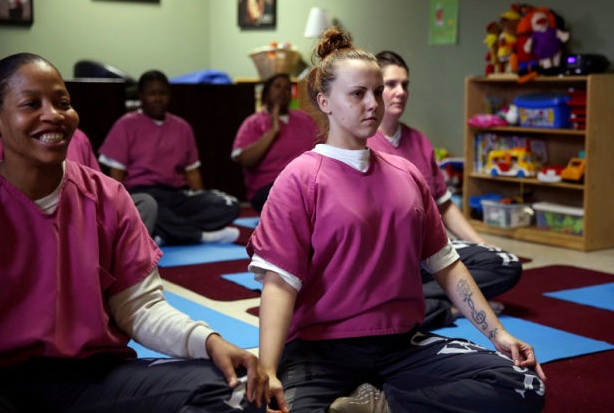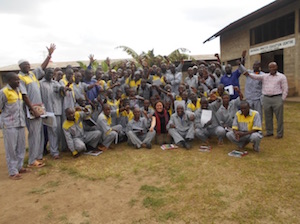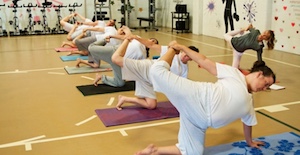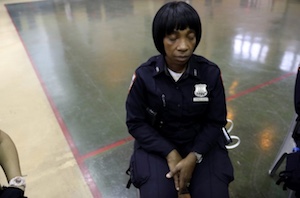Qigong in Prisons
The U. S. prison population is enormous and growing. Stress is a relentless and inevitable element of life in prison. The physical, mental and emotional toll that stress-related illnesses take on the inmates, guards and their families is huge. This toll filters into the rest of society. Some courageous people are addressing this problem by teaching Qigong inside prisons. Strong initial evidence indicates that inmates who practice Qigong are generally healthier and make a better adjustment when they gain their freedom. If this proves to be true, the societal and economic benefits are potentially very large. Bill Douglas, the organizer of World Tai Chi and Qigong Day, describes Penal and Drug Rehabilitation at the Kansas Correctional Facility for Women.
 Psychological Benefits of Yoga for Female Inmates.
Psychological Benefits of Yoga for Female Inmates.

Transcendental Meditation and Reduced Trauma Symptoms in Female Inmates: A Randomized Controlled Study.
Penal & Drug Rehabilitation w/ Tai Chi & Qigong—A Resource for Court, Jail, Prison, and Drug Rehabilitation Professionals, & Tai Chi & QG Teachers. The National Institute of Corrections recognizes World Tai Chi and Qigong Day's website as a resource for the use of Tai Chi and Qigong in courts, jails, and prisons.
Yoga Could Help Improve Prison Environment- New Study.
Tai Chi Health and Meditation Helps Prisoners (YouTube 4:10). 20 Years ago, Bruce Kumar Frantzis was asked and then volunteered to teach Wu style Tai Chi at the New Mexico State Penitentiary (which had just undergone extremely violent riots). The experiment of learning Tai Chi had a profound effect on the prisoner's lives, both by fixing long standing ailments (and stress) with Tai Chi's Medical Aspects and by rehabilitating the prisoners (and in turn contributing to calming down the violence in the prison) through practicing Tai Chi as meditation.
The David Lynch Foundation is working to bring the benefits of meditation to the prison population as is the Prison Mindfulness Institute.
Yoga and Meditation Improve Life Behind Bars and Beyond. Studies have shown teaching prisoners meditation and mindfulness can have positive effects on their behavior, and translates into further reductions in recidivism compared to prisoners who have only participated in traditional rehabilitation and educational programs.
Inmates find Solace in Yoga.
 Participation in a 10-week course of yoga improves behavioural control and decreases psychological distress in a prison population.
Participation in a 10-week course of yoga improves behavioural control and decreases psychological distress in a prison population.
Yoga for prison inmates is no longer a stretch.
Athens inmates reduce prison stress with yoga.
How yoga is helping prisoners stay calm. Very little research has been done into the value of yoga and meditation in prisons - but many prisoners have found they help overcome the stresses and strains of life behind bars. Prison authorities too are waking up to the possible benefits, providing classes in the hope of fostering a calm and positive atmosphere.
Mindfulness training improves attentional task performance in incarcerated youth.
Maximum security inmates turn to meditation.

Psychological Benefits of Yoga for Female Inmates.

Yoga practice can play an important part in the rehabilitation of prison inmates.



 Participation in a 10-week course of yoga improves behavioural control and decreases psychological distress in a prison population
Participation in a 10-week course of yoga improves behavioural control and decreases psychological distress in a prison population


